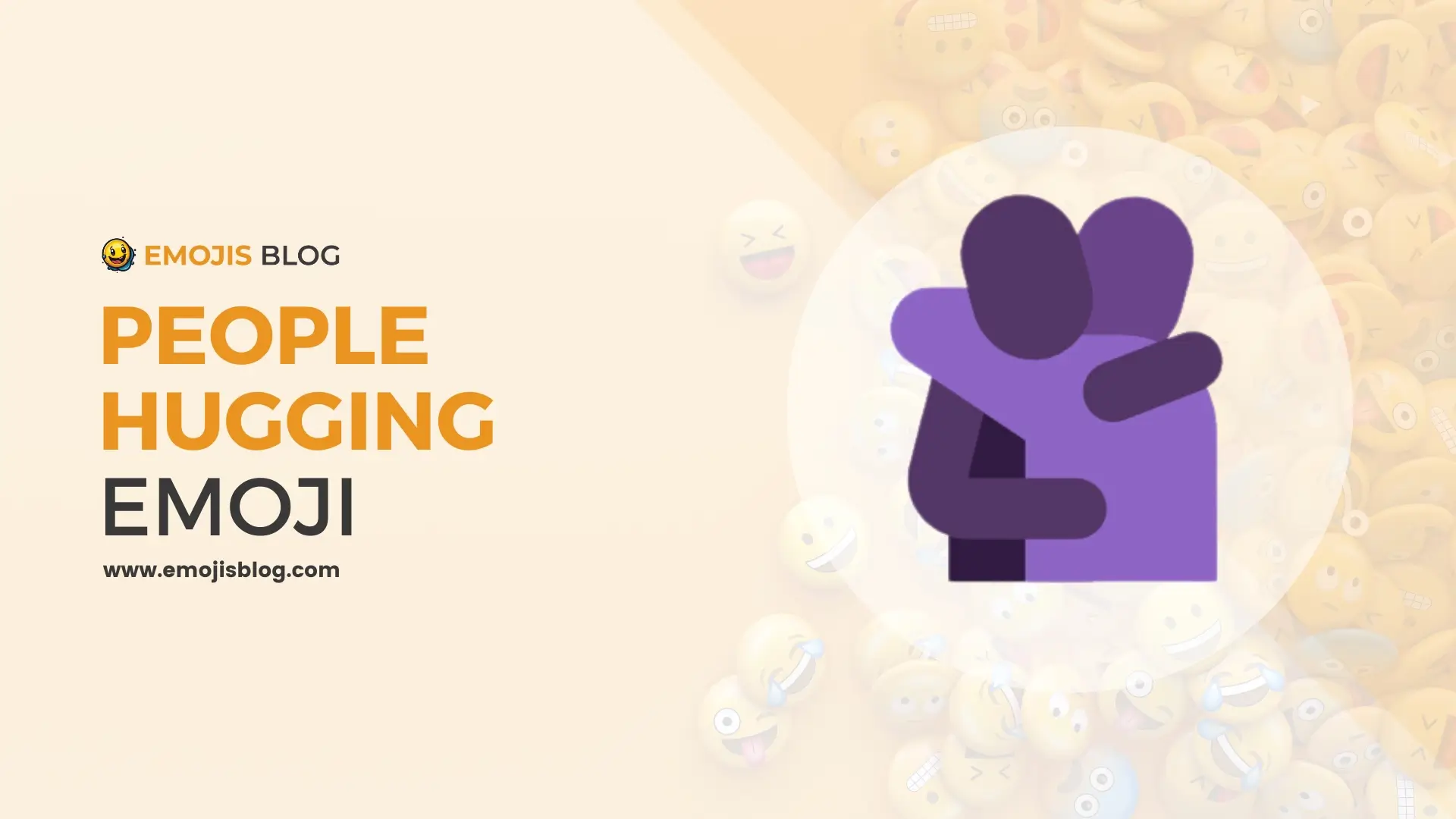What Does The People Hugging Emoji 🫂 Mean?
🫂
People Hugging Emoji 🫂 Meanings
The people hugging emoji, 🫂, is a versatile symbol used in digital communication to convey comfort, support, affection, and unity. Introduced in Unicode 13.0 in 2020, it features two gender-neutral figures embracing each other, signifying a hug. This emoji is often used to offer virtual hugs, express love and care, celebrate friendships, and demonstrate solidarity in times of need. Its universal design and emotional resonance make it an effective tool for fostering connections and conveying empathy across various contexts and cultures.
Technical Information
| Attribute | Details |
|---|---|
| Emoji | 🫂 |
| Unicode Name | People Hugging |
| Code Point | U+1FAC2 |
| Unicode Version | 13.0 |
| Emoji Version | 13.0 |
| Introduced | 2020 |
| Category | Smileys & Emotion |
| Subcategory | Face Hands |
| Decimal | 129794 |
| Hexadecimal | 0x1FAC2 |
| Shortcode | :people_hugging: |
| Related Emojis | 🤗 (Smiling Face with Open Hands), 💞 (Revolving Hearts), ❤️ (Red Heart) |
| Display Variations | Slight variations in design across different platforms (e.g., Apple, Google, Microsoft) |
| Design Description | Two gender-neutral figures embracing each other, signifying a hug |
What Does the People Hugging Emoji 🫂 Mean?
The people hugging emoji, 🫂, is a widely used symbol in digital communication that conveys a range of emotions and messages. From expressing comfort and support to showing affection and camaraderie, this emoji has become a staple in online conversations. Understanding the nuances of this emoji can enhance your ability to communicate effectively in the digital age.
Origins and Design
The people hugging emoji was introduced in Unicode 13.0 in 2020 and subsequently added to Emoji 13.0. The design features two gender-neutral figures embracing each other, signifying a hug. The figures are depicted in a way that emphasizes warmth and closeness, which is central to the emoji’s intended use.
Common Uses and Interpretations
The people hugging emoji is versatile and can be used in various contexts. Here are some common interpretations:
Expressing Comfort and Support
One of the primary uses of the 🫂 emoji is to offer comfort and support. It is often sent to someone who is going through a difficult time, such as experiencing a loss, dealing with stress, or facing a challenging situation. The emoji serves as a virtual hug, letting the recipient know that the sender is there for them.
Showing Affection and Love
The hugging emoji is also a symbol of affection and love. It can be used between friends, family members, or romantic partners to express care and tenderness. Sending 🫂 can be a way to say “I miss you” or “I love you” when physical hugs are not possible.
Celebrating Friendship and Unity
In addition to comfort and affection, the people hugging emoji can represent friendship and unity. It is used to celebrate strong bonds between individuals and to convey a sense of togetherness. Whether in group chats or social media posts, 🫂 can highlight the importance of camaraderie and mutual support.
Cultural and Emotional Significance
Cross-Cultural Understanding
The emoji transcends language barriers and is understood universally as a symbol of hugging. Its use in digital communication helps bridge cultural gaps, allowing people from different backgrounds to connect emotionally. The simplicity of the emoji’s design makes it accessible and easily recognizable.
Emotional Connection
In the digital age, where face-to-face interactions are often limited, emojis like 🫂 play a crucial role in fostering emotional connections. They provide a way to convey feelings that might be difficult to express through text alone. The people hugging emoji, in particular, offers a visual representation of empathy and solidarity.
Variations and Related Emojis
While the 🫂 emoji is specific in its depiction of a hug, there are other emojis that convey similar sentiments:
- 🤗 Smiling Face with Open Hands: Often used to represent a hug or a welcoming gesture.
- 💞 Revolving Hearts: Symbolizes mutual love and affection, often used in romantic contexts.
- ❤️ Red Heart: A classic symbol of love and affection, frequently used alongside the hugging emoji to reinforce the message.
Practical Tips for Using the People Hugging Emoji
Context Matters
When using the people hugging emoji, consider the context of your conversation. Ensure that the recipient will understand your intended message. In professional settings, for instance, the emoji might be used sparingly and with caution, depending on the relationship between colleagues.
Pairing with Text
To enhance clarity, pair the emoji with accompanying text. For example, you might write, “I’m here for you 🫂” or “Sending you a big hug 🫂”. This helps to avoid any potential misinterpretation and reinforces the emotional tone of your message.
Frequency of Use
While the 🫂 emoji is a powerful tool for expressing emotion, using it too frequently in conversations can dilute its impact. Reserve it for moments when you genuinely want to convey support, affection, or unity to maintain its significance.
Conclusion
The people hugging emoji 🫂 is a multifaceted symbol in digital communication, representing comfort, support, affection, and unity. Its universal appeal and emotional resonance make it a valuable tool for connecting with others in meaningful ways. By understanding the nuances of this emoji, you can enhance your digital interactions and convey your feelings more effectively.

